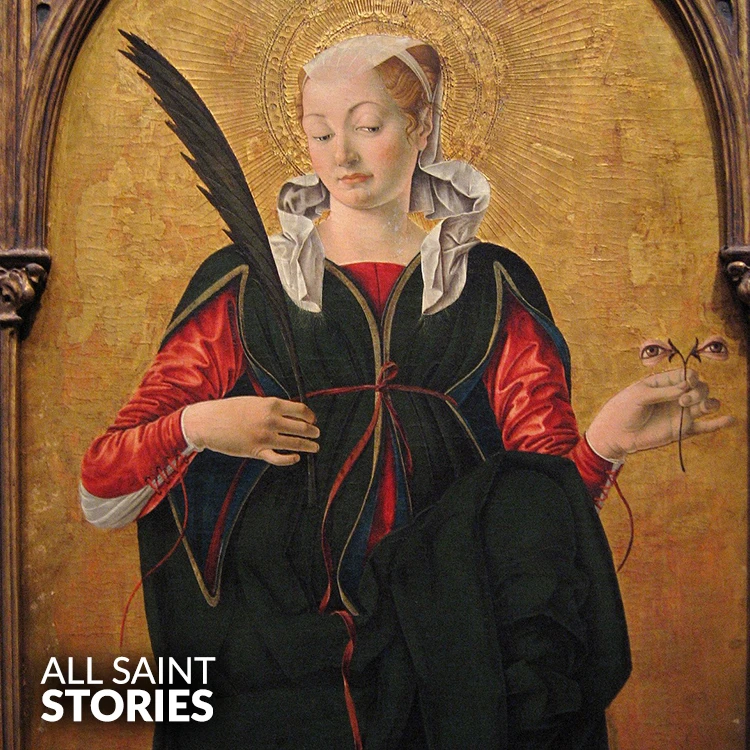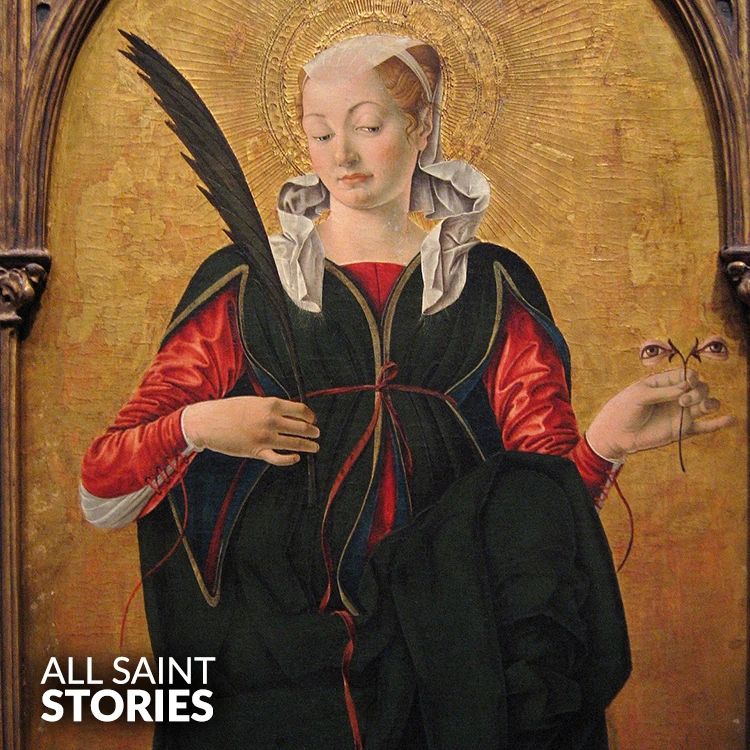"Saint Lucy, virgin and martyr, You gave your sight to God and became a beacon of faith. Intercede for us, that we may see clearly the path of light And remain steadfast in our devotion. Help us in times of darkness, And guide us to the everlasting light of Christ. Amen."
ST. LUCY (MARTYR, VIRGIN)
ST. LUCY (MARTYR, VIRGIN)

Saint Lucy is a virgin martyr from Syracuse, Sicily, who lived during the early 4th century. Known for her unwavering Christian faith and charity, she is celebrated for her courage in the face of Roman persecution under Diocletian. Saint Lucy is the patron saint of the blind and those with eye-related ailments. Her feast day, December 13, is marked by light-filled celebrations, especially in Scandinavian countries. Her legend of sacrificing her wealth to help the poor and suffering a violent martyrdom has made her one of the most beloved saints.
Saint Lucy, also known as Santa Lucia, was born around the year 283 AD in Syracuse, Sicily, into a noble and wealthy family. From a young age, Lucy dedicated her life to Christ, vowing to remain a virgin and serve the poor. Her faith led her to give away her dowry to the poor after praying for the healing of her sick mother, Eutychia. Miraculously, her mother was healed, and Lucy fulfilled her vow by distributing her inheritance to the less fortunate.
Despite her noble status, Lucy’s devotion to Christianity did not go unnoticed by the Roman authorities. During the reign of Emperor Diocletian, who vigorously persecuted Christians, Lucy faced great opposition because of her unwavering faith. She refused to marry a pagan man whom her mother had chosen for her. Enraged, he reported her to the authorities for being a Christian, and Lucy was arrested. Her refusal to renounce her faith led to a series of brutal tortures.
One of the most well-known aspects of her martyrdom is the story of her eyes. According to tradition, Lucy’s eyes were gouged out by her tormentors, but she miraculously retained her sight. Because of this, she is often depicted with her eyes on a plate or holding a bowl with her eyes, symbolizing both her suffering and the restoration of her vision. Some legends also state that she was miraculously healed of her blindness before her death. In addition to her association with sight, the name Lucy derives from the Latin word lux, meaning "light," and she is also considered the patron saint of light, symbolizing the triumph of light over darkness.
Her death came around the year 304 AD, when she was martyred by being stabbed with a sword. However, due to the horrific nature of her death, exact historical details are difficult to verify. Regardless, her unwavering faith in the face of persecution left a lasting mark on the early Christian community.
In the centuries following her death, Lucy’s veneration spread throughout the Christian world. By the 5th century, she was celebrated as a saint, and her feast day, December 13, became a prominent celebration in many countries, particularly in Scandinavia. During this day, processions of girls dressed in white robes with candles on their heads are a common tradition. These celebrations highlight not only Lucy’s martyrdom but also her association with light in the darkest months of the year.
Saint Lucy is also known for her intercession for those suffering from eye diseases or blindness. She is often called upon for her miraculous healing powers and for the protection of one’s sight. Her legacy endures in both the religious and cultural practices of many regions, where she is celebrated as a symbol of faith, courage, and compassion.
Video Not Found
The information on this website is compiled from various trusted sources. While we aim for accuracy, some details may be incomplete or contain discrepancies.
If you notice any errors or have additional information about this saint, please use the form on the left to share your suggestions. Your input helps us improve and maintain reliable content for everyone.
All submissions are reviewed carefully, and your personal details will remain confidential. Thank you for contributing to the accuracy and value of this resource.
Credits & Acknowledgments
- Anudina Visudhar (Malayalam) – Life of Saints for Everyday
by Msgr. Thomas Moothedan, M.A., D.D. - Saint Companions for Each Day
by A. J. M. Mausolfe & J. K. Mausolfe - US Catholic (Faith in Real Life) – Informational articles
- Wikipedia – General reference content and images
- Anastpaul.com – Saint images and reflections
- Pravachaka Sabdam (Malayalam) – Saint-related content and insights
We sincerely thank these authors and platforms for their valuable contributions. If we have unintentionally missed any attribution, please notify us, and we will make the correction promptly.
If you have any suggestion about ST. LUCY (MARTYR, VIRGIN)
Your suggestion will help improve the information about this saint. Your details will not be disclosed anywhere.
© 2025 Copyright @ www.allsaintstories.com





 English
English
 Italian
Italian
 French
French
 Spanish
Spanish
 Malayalam
Malayalam
 Russian
Russian
 Korean
Korean
 Sinhala
Sinhala
 Japanese
Japanese
 Arabic
Arabic
 Portuguese
Portuguese
 Bantu
Bantu
 Greek
Greek
 German
German
 Dutch
Dutch
 Filipino
Filipino